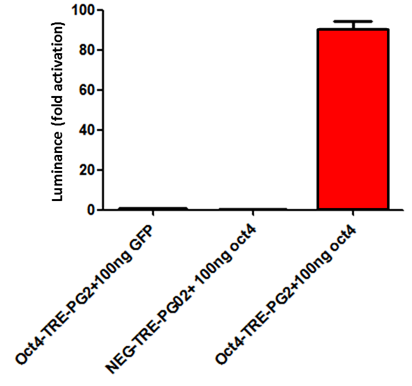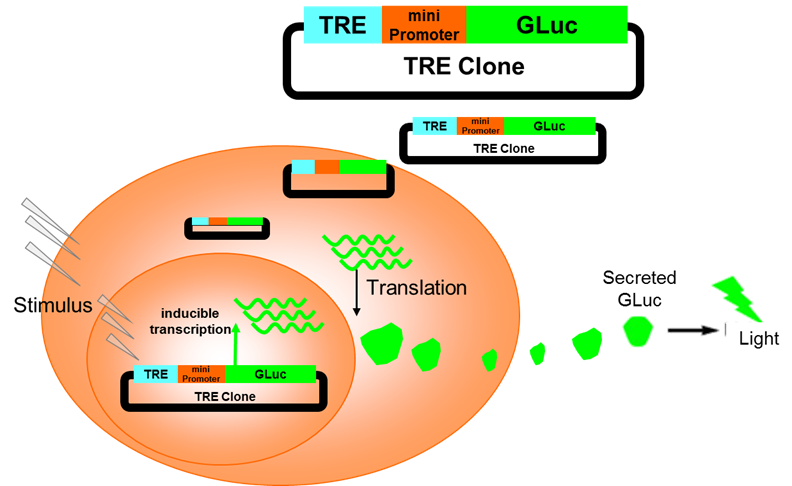*Promotions are valid in the US & Canada only. For international customers, please contact your local distributors. Promotion ends July 31, 2025. Discounts are not valid on previous purchases and cannot be combined with additional discounts.
GeneCopoeia’s GLuc-ON™ transcriptional response element (TRE) clones enable rapid and sensitive signal pathway analysis in mammalian cell lines. Using a secreted Gaussia Luciferase (GLuc) as the reporter, GeneCopoeia GLuc-ON™ TRE clones are designed for robust and sensitive activation of specific signaling pathways in response to environmental stimuli or other experimental manipulation. Each GLuc-ON™ TRE clone comes either in transfection-ready or lentiviral format, and contains tandem repeats of a TRE placed upstream of a minimal CMV promoter and the Gluc gene.
GeneCopoeia is also now offering cell lines stably expressing Transcriptional Response Elements. Click on the TRE stable cell lines tab to order, or visit the Transcriptional Response Element Stable Cell Lines page to learn more.
Advantages
- Live cell assays. Naturally secreted GLuc reporter makes lysing of cells unnecessary.
- Real-time study. Data is generated quickly, closely resembling real-time activities
- High-throughput compatible.
Applications
GLuc-ON™ TRE clones offer powerful tools for several applications, including:
- Drug discovery or validation. Identify small molecules that either stimulate or inhibit a signaling pathway of interest.
- Analyze response of cells to proteins and peptides.
- Analyze response of cells to hormones.
- Functional genomics. Analyze the biological effects on a signaling pathway in response to gene activation, overexpression, knockdown, knockout, or mutagenesis (Figure 1).
- Viral infection. Analyze response of cells to viruses.
How do GLuc-ON™ TRE clones work?
GLuc-ON™ TRE response elements are engineered to provide strong activation of GLuc expression with low background. The GLuc reporter is a secreted protein, permitting convenient and rapid detection in the cell culture medium without lysing the cells (Figure 2).
Figure 2. How GLuc-ON TRE clones work.


